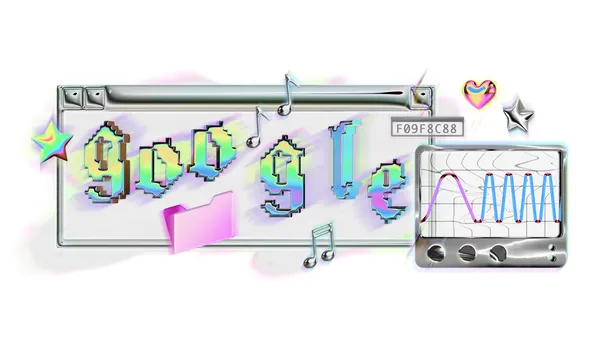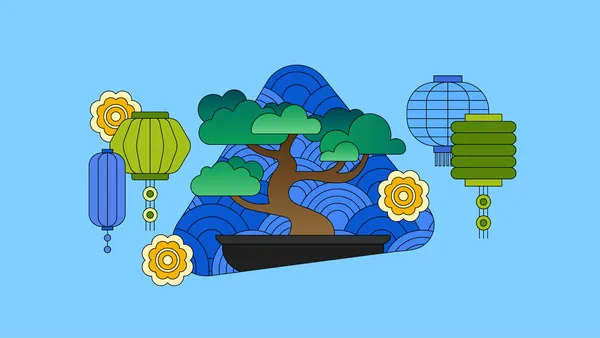 Discover ways to participate in Pride Month
Discover ways to participate in Pride Month
Experience Pride with Google
 Discover ways to participate in Pride Month
Discover ways to participate in Pride Month
 Discover ways to participate in Pride Month
Discover ways to participate in Pride Month

Today at Google I/O, we announced the many ways we’re helping you build excellent, adaptive experiences, and helping you stay more productive through updates to our tooling that put AI at your fingertips and throughout your development lifecycle. Here’s a recap of 16 of our favorite announcements for Android developers; you can also see what was announced last week in The Android Show: I/O Edition. And stay tuned over the next two days as we dive into all of the topics in more detail!
Generative AI enhances apps' experience by making them intelligent, personalized and agentic. This year, we announced new ML Kit GenAI APIs using Gemini Nano for common on-device tasks like summarization, proofreading, rewrite, and image description. We also provided capabilities for developers to harness more powerful models such as Gemini Pro, Gemini Flash, and Imagen via Firebase AI Logic for more complex use cases like image generation and processing extensive data across modalities, including bringing AI to life in Android XR, and a new AI sample app, Androidify, that showcases how these APIs can transform your selfies into unique Android robots! To start building intelligent experiences by leveraging these new capabilities, explore the developer documentation, sample apps, and watch the overview session to choose the right solution for your app.
Mobile Android apps form the foundation across phones, foldables, tablets and ChromeOS, and this year we’re helping you bring them to cars and XR and expanding usages with desktop windowing and connected displays. This expansion means tapping into an ecosystem of 500 million devices – a significant opportunity to engage more users when you think adaptive, building a single mobile app that works across form factors. Resources, including Compose Layouts library and Jetpack Navigation updates, help make building these dynamic experiences easier than before. You can see how Peacock, NBCUniveral’s streaming service (available in the US) is building adaptively to meet users where they are.
The new Material 3 Expressive update provides tools to enhance your product's appeal by harnessing emotional UX, making it more engaging, intuitive, and desirable for users. Check out the I/O talk to learn more about expressive design and how it inspires emotion, clearly guides users toward their goals, and offers a flexible and personalized experience.

Measure the return on investment of your widgets (available soon) and easily create personalized widget previews with Glance 1.2. Promoted Live Updates notify users of important ongoing notifications and come with a new Progress Style standardized template.

This year's I/O introduces several camera and media enhancements. These include a software low light boost for improved photography in dim lighting and native PCM offload, allowing the DSP to handle more audio playback processing, thus conserving user battery. Explore our detailed sessions on built-in effects within CameraX and Media3 for further information.
We're launching expanded opportunities for developers to build in-car experiences, including new Gemini integrations, support for more app categories like Games and Video, and enhanced capabilities for media and communication apps via the Car App Library and new APIs. Alongside updated car app quality tiers and simplified distribution, we'll soon be providing improved testing tools like Android Automotive OS on Pixel Tablet and Firebase Test Lab access to help you bring your innovative apps to cars. Learn more from our technical session and blog post on new in-car app experiences.
We announced Android XR in December, and today at Google I/O we shared a bunch of updates coming to the platform including Developer Preview 2 of the Android XR SDK plus an expanding ecosystem of devices: in addition to the first Android XR headset, Samsung’s Project Moohan, you’ll also see more devices including a new portable Android XR device from our partners at XREAL. There’s lots more to cover for Android XR: Watch the Compose and AI on Android XR session, and the Building differentiated apps for Android XR with 3D content session, and learn more about building for Android XR.

This year we are launching Wear OS 6: the most powerful and expressive version of Wear OS. Wear OS 6 features Material 3 Expressive, a new UI design with personalized visuals and motion for user creativity, coming to Wear, Android, and Google apps later this year. Developers gain access to Material 3 Expressive on Wear OS by utilizing new Jetpack libraries: Wear Compose Material 3, which provides components for apps and Wear ProtoLayout Material 3 which provides components and layouts for tiles. Get started with Material 3 libraries and other updates on Wear.

You can leverage more resources within Compose's core and Material libraries with the stable release of Compose for TV, empowering you to build excellent adaptive UIs across your apps. We're also thrilled to share exciting platform updates and developer tools designed to boost app engagement, including bringing Gemini capabilities to TV in the fall, opening enrollment for our Video Discovery API, and more.
Compose is our big bet for UI development. The latest stable BOM release provides the features, performance, stability, and libraries that you need to build beautiful adaptive apps faster, so you can focus on what makes your app valuable to users.

Kotlin Multiplatform (KMP) enables teams to reach new audiences across Android and iOS with less development time. We’ve released a new Android Studio KMP shared module template, updated Jetpack libraries and new codelabs (Getting started with Kotlin Multiplatform and Migrating your Room database to KMP) to help developers who are looking to get started with KMP. Shared module templates make it easier for developers to craft, maintain, and own the business logic. Read more on what's new in Android's Kotlin Multiplatform.
Gemini in Android Studio is the AI-powered coding companion that makes Android developers more productive at every stage of the dev lifecycle. In March, we introduced Image to Code to bridge the gap between UX teams and software engineers by intelligently converting design mockups into working Compose UI code. And today, we previewed new agentic AI experiences, Journeys for Android Studio and Version Upgrade Agent. These innovations make it easier to build and test code. You can read more about these updates in What’s new in Android development tools.
In this latest release, we're empowering devs with AI-driven tools like Gemini in Android Studio, streamlining UI creation, making testing easier, and ensuring apps are future-proofed in our ever-evolving Android ecosystem. These innovations accelerate development cycles, improve app quality, and help you stay ahead in a dynamic mobile landscape. To take advantage, upgrade to the latest Studio release. You can read more about these innovations in What’s new in Android development tools.

Get ready for exciting updates from Play designed to boost your discovery, engagement and revenue! Learn how we’re continuing to become a content-rich destination with enhanced personalization and fresh ways to showcase your apps and content. Plus, explore powerful new subscription features designed to streamline checkout and reduce churn. Read I/O 2025: What's new in Google Play to learn more.

Play Games Services (PGS) connects over 2 billion gamer profiles on Play, powering cross-device gameplay, personalized gaming content and rewards for your players throughout the gaming journey. We are moving PGS v1 features to v2 with more advanced features and an easier integration path. Learn more about the migration timeline and new features.
We unpacked some of the latest features coming to users in Android 16, which we’ve been previewing with you for the last few months. If you haven’t already, make sure to test your apps with the latest Beta of Android 16. Android 16 includes Live Updates, professional media and camera features, desktop windowing and connected displays, major accessibility enhancements and much more.
This was just a preview of some of the cool updates for Android developers at Google I/O, but stay tuned to Google I/O over the next two days as we dive into a range of Android developer topics in more detail. You can check out the What’s New in Android and the full Android track of sessions, and whether you’re joining in person or around the world, we can’t wait to engage with you!
Explore this announcement and all Google I/O 2025 updates on io.google starting May 22.

At Google Play, we're dedicated to helping people discover experiences they'll love, while empowering developers like you to bring your ideas to life and build successful businesses.
At this year’s Google I/O, we unveiled the latest ways we’re empowering your success with new tools that provide robust testing and actionable insights. We also showcased how we’re continuing to build a content-rich Play Store that fosters repeat engagement alongside new subscription capabilities that streamline checkout and reduce churn.
Check out all the exciting developments from I/O below and learn how they'll help you grow your business on Google Play.
Last month, we introduced our latest Play Console updates focused on improving quality and performance. A redesigned app dashboard centered around four developer objectives (Test and release, Monitor and improve, Grow users, Monetize) and new Android vitals metrics offer quick insights and actionable suggestions to proactively improve the user experience.
Building on these updates, we've launched dedicated overview pages for two developer objectives: Test and release and Monitor and improve. These new pages bring together more objective-related metrics, relevant features, and a "Take action" section with contextual, dynamic advice. Overview pages for Grow and Monetize will be coming soon.
Historically, a release at 100% live meant there was no turning back, leaving users stuck with a flawed version until a new update rolled out. Soon, you'll be able to halt fully-live releases, through Play Console and the Publishing API to stop the distribution of problematic versions to new users.
We launched two tools to enhance your store listings. The asset library makes it easy to upload, edit, and view your visual assets. Upload them from Google Drive, organize with tags, and crop for repurposing. And with new open metrics, you gain deeper insights into listing performance so you can better understand how they attract, engage, and re-engage users.
We're committed to robust security and preventing abuse so you can thrive on Play’s trusted platform. The Play Integrity API continuously evolves to combat emerging threats, with these recent enhancements:
Last year, we shared our vision for a content-rich Google Play that has already delivered strong results. Year-over-year, Apps Home has seen over a 25% increase in average monthly visitors with apps seeing a 10% growth in acquisitions and double-digit growth in app spend for those monetizing on Google Play. Building on that vision, we're introducing even more updates to elevate your discovery and engagement, both on and off the store.
For example, curated spaces, launched last year, celebrate seasonal interests like football (soccer) in Brazil and cricket in India, and evergreen interests like comics in Japan. By adding daily content—match highlights, promotions, and editorial articles directly on the Apps Home—these spaces foster discovery and engagement. Curated spaces are a hit with over 920,000 highly engaged users in Japan returning to the comics space monthly. Building on this momentum, we are expanding to more locations and categories this year.
We're launching new topic browse pages that feature timely, relevant, and visually engaging content. Users can find them throughout the Store, including Apps Home, store listing pages, and search. These pages debut this month in the US with Media & Entertainment, showcasing over 100,000 shows, movies, and select sports. More localized topic pages will roll out globally later this year.
We’re expanding Where to Watch to more markets, including the UK, Korea, Indonesia, and Mexico, to help users find and deep-link directly into their subscribed apps for movies and TV. Since launching in the US in November 2024, we've seen promising results: People who view app content through Where to Watch return to Play more frequently and increase their content search activity by 30%.
We're also enhancing how your content is displayed on the Play Store. Starting this July, all app developers can add a hero content carousel and a YouTube playlist carousel to their store listings. These formats will help showcase your best content and drive greater user engagement and discovery.
For apps best experienced through sound, we're launching audio samples on the Apps Home. A simple tap offers users a brief escape into your audio content. In early testing, audio samples made users 3x more likely to install or open an app! This feature is now available for all Health & Wellness app developers with users in the US, with more categories and markets coming soon. You can express your interest in promoting audio content.
Last year, we introduced Engage SDK, a unified solution to deliver personalized content and guide users to relevant in-app experiences. Integrating it unlocks surfaces like Collections, our immersive full-screen experience bringing content directly to the user's home screen.
We're rolling out updates to expand your content’s reach even further:
Integrate with Engage SDK today to take advantage of this new expansion and boost re-engagement. Try our codelab to test the ease of publishing content with Engage SDK and express interest in the developer preview.
With over a quarter-billion subscriptions, Google Play is one of the world's largest subscriptions platforms. We're committed to helping you turn engaged users into revenue growth by continually enhancing our tools to meet evolving customer needs.
To streamline your purchase flow, we’re introducing multi-product checkout for subscriptions. This lets you sell subscription add-ons alongside base subscriptions, all under a single, aligned payment schedule. Users get a simplified experience with one price and one transaction, while you gain more control over how subscribers upgrade, downgrade, or manage their add-ons.
To help you retain more of your subscribers, we’re now showcasing subscription benefits in more places across Play – including the Subscriptions Center, in reminder emails, and during purchase and cancellation flows. This increased visibility has already reduced voluntary churn by 2%. Be sure to enter your subscription benefits in Play Console so you can leverage this powerful new capability.
Reducing involuntary churn is a key factor in optimizing your revenue. When payment methods unexpectedly decline, users might unintentionally cancel. Now, instead of immediate cancellation, you can now choose a grace period (up to 30 days) or an account hold (up to 60 days). Developers who increased the decline recovery period – from 30 to 60 days – saw an average 10% reduction in involuntary churn for renewals.
On top of this, we're expanding our commitment to get more buyers ready for purchases throughout their entire journey. This includes prompting users to set up payment methods and verification right at device setup. After setup, we've integrated prompts into highly visible areas like the Play and Google account menus. And as always, we’re continuously enabling payments in more markets and expanding payment options. Plus, our AI models now help optimize in-app transactions by suggesting the right payment method at the right time, and we're bringing buyers back with effective cart abandonment reminders.
Our latest updates reinforce our commitment to fostering a thriving Google Play ecosystem. From enhanced discovery and robust tools to new monetization avenues, we're empowering you to innovate and grow. We're excited for the future we're building together and encourage you to use these new capabilities to create even more impactful experiences. Thank you for being an essential part of the Google Play community.
Explore this announcement and all Google I/O 2025 updates on io.google starting May 22.

Google Play empowers you to manage and distribute your innovative and trusted apps and games to billions of users around the world across the entire breadth of Android devices, and historically, all Android devices have managed memory in 4 KB pages.
As device manufacturers equip devices with more RAM to optimize performance, many will adopt larger page sizes like 16 KB. Android 15 introduces support for the increased page size, ensuring your app can run on these evolving devices and benefit from the associated performance gains.
Starting November 1st, 2025, all new apps and updates to existing apps submitted to Google Play and targeting Android 15+ devices must support 16 KB page sizes.
This is a key technical requirement to ensure your users can benefit from the performance enhancements on newer devices and prepares your apps for the platform's future direction of improved performance on newer hardware. Without recompiling to support 16 KB pages, your app might not function correctly on these devices when they become more widely available in future Android releases.
We’ve seen that 16 KB can help with:
We recommend checking your apps early especially for dependencies that might not yet be 16 KB compatible. Many popular SDK providers, like React Native and Flutter, already offer compatible versions. For game developers, several leading game engines, such as Unity, support 16 KB, with support for Unreal Engine coming soon.
A substantial number of apps are already compatible, so your app may already work seamlessly with this requirement. For most of those that need to make adjustments, we expect the changes to be minimal.
Our December blog post, Get your apps ready for 16 KB page size devices, provides a more detailed technical explanation and guidance on how to prepare your apps.
It's easy to see if your app bundle already supports 16 KB memory page sizes. Visit the app bundle explorer page in Play Console to check your app's build compliance and get guidance on where your app may need updating.

Beyond the app bundle explorer, make sure to also test your app in a 16 KB environment. This will help you ensure users don’t experience any issues and that your app delivers its best performance.
For more information, check out the full documentation.
Thank you for your continued support in bringing delightful, fast, and high-performance experiences to users across the breadth of devices Play supports. We look forward to seeing the enhanced experiences you'll deliver with 16 KB support.
 Google Play helps keep your apps, data, and payments safe, so you can download with confidence.
Google Play helps keep your apps, data, and payments safe, so you can download with confidence.
 This Asian American, Native Hawaiian, and Pacific Islander Heritage Month, Google's products can help you embrace the spirit of connection and celebration
This Asian American, Native Hawaiian, and Pacific Islander Heritage Month, Google's products can help you embrace the spirit of connection and celebration

The Google I/O agenda is live. We're excited to share Google’s biggest announcements across AI, Android, Web, and Cloud May 20-21. Tune in to learn how we’re making development easier so you can build faster.
We'll kick things off with the Google Keynote at 10:00 AM PT on May 20th, followed by the Developer Keynote at 1:30 PM PT. This year, we're livestreaming two days of sessions directly from Mountain View, bringing more of the I/O experience to you, wherever you are.
Here’s a sneak peek of what we’ll cover:
Join us online for livestreams May 20-21, followed by on-demand sessions and codelabs on May 22. Register today and explore the full program for sessions like these:
We're excited to share what's next and see what you build!
By the Google I/O team

The Google I/O agenda is live. We're excited to share Google’s biggest announcements across AI, Android, Web, and Cloud May 20-21. Tune in to learn how we’re making development easier so you can build faster.
We'll kick things off with the Google Keynote at 10:00 AM PT on May 20th, followed by the Developer Keynote at 1:30 PM PT. This year, we're livestreaming two days of sessions directly from Mountain View, bringing more of the I/O experience to you, wherever you are.
Here’s a sneak peek of what we’ll cover:
Join us online for livestreams May 20-21, followed by on-demand sessions and codelabs on May 22. Register today and explore the full program for sessions like these:
We're excited to share what's next and see what you build!
By the Google I/O team

The Google I/O agenda is live. We're excited to share Google’s biggest announcements across AI, Android, Web, and Cloud May 20-21. Tune in to learn how we’re making development easier so you can build faster.
We'll kick things off with the Google Keynote at 10:00 AM PT on May 20th, followed by the Developer Keynote at 1:30 PM PT. This year, we're livestreaming two days of sessions directly from Mountain View, bringing more of the I/O experience to you, wherever you are.
Here’s a sneak peek of what we’ll cover:
Join us online for livestreams May 20-21, followed by on-demand sessions and codelabs on May 22. Register today and explore the full program for sessions like these:
We're excited to share what's next and see what you build!
 To celebrate World Book Day on April 23rd, Google Play Books provides tools to make reading extra engaging for families and children. Here are two ways we’re creating a …
To celebrate World Book Day on April 23rd, Google Play Books provides tools to make reading extra engaging for families and children. Here are two ways we’re creating a …